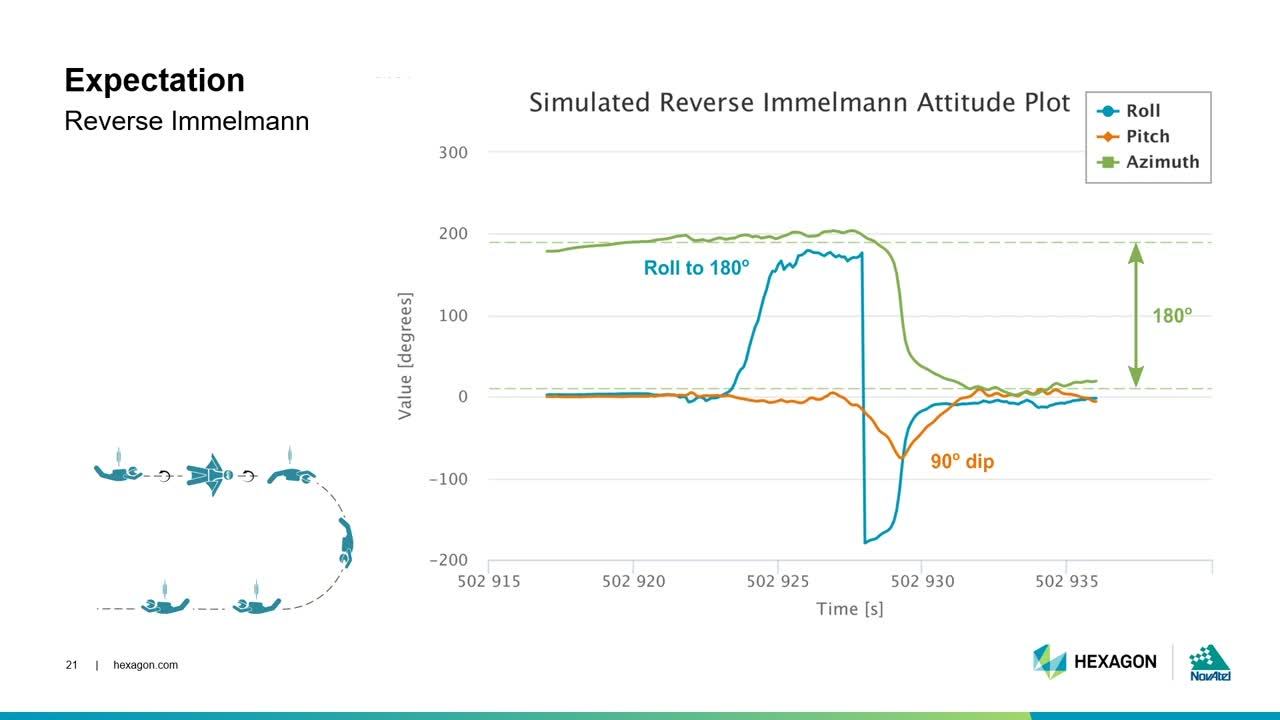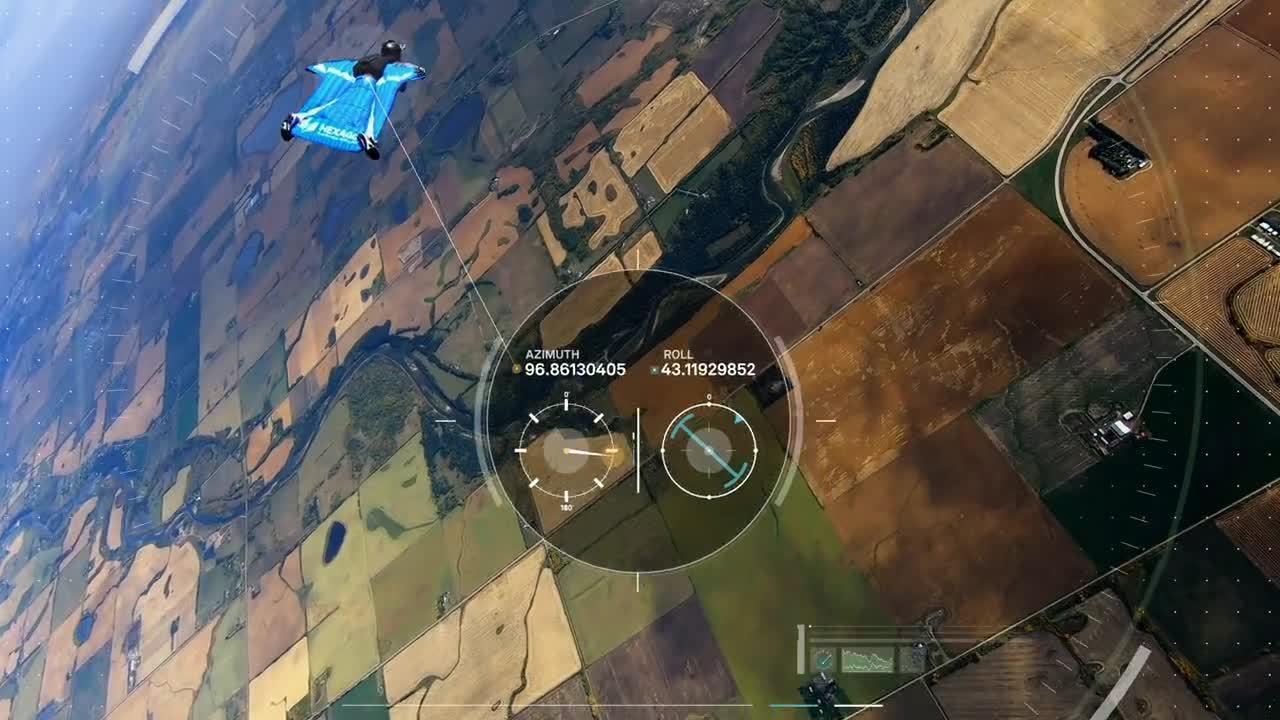When it comes to delivering the best GNSS receiver technology, Hexagon | NovAtel® products like our GNSS receivers undergo extensive testing in a variety of environments. What is the most dynamic environment in which to test our PwrPak7D-E2 enclosed receiver? On a skydiver at 10,000 feet, of course!
We didn’t come to this conclusion ourselves. We previously tested the OEM615 GNSS receiver by securing it to NovAtel engineer and experienced wingsuit jumper Andrew Levson in 2011. At that time, the OEM615 needed a small laptop, an antenna, and our ALIGN® heading technology to gather the appropriate data. Even then, we could only collect data on Levson’s coordinates and azimuth.
|
Equipment required for testing |
|
|
2011 |
2019 |
|
One OEM615 receiver on each leg for two total |
One PwrPak7D-E2 enclosure on the waist |
|
One antenna for each receiver for two total |
One antenna on the head and one on the heel |
|
1.3 A-h, 12-volt battery |
2.3 A-h, 12-volt battery |
| Laptop to store data |
|
That was 2011. Now, with the PwrPak7D-E2, we can monitor roll, pitch, and acceleration in any direction, thanks to the inclusion of an Epson G370 IMU device and NovAtel’s SPAN tightly coupled GNSS+INS technology. Combining Epson’s IMU with SPAN and our OEM7® receiver in a light, compact, and portable enclosure produces a powerful device for use in a variety of applications. Our GNSS receivers have improved considerably since 2011.
Measuring the PwrPak7D-E2’s positioning accuracy
In addition to confirming whether the PwrPak7D-E2’s physical size affected application, we also assessed its capabilities for accurate positioning, velocity, heading, and attitude. How would the enclosure affect Levson’s abilities as a wingsuit jumper?
Because of its small size yet strong processing power, we could limit the number of devices attached to Levson before the jump.
Compared to the 2011 experiment where it was necessary to use two receivers, two antennas, a laptop, and battery, the 2019 PwrPak7 test required significantly fewer devices.
In 2011, we were only able to monitor Levson’s heading; in 2019, we expanded and captured Levson’s heading, azimuth, pitch, and roll measurements.
Broadening the scope of measurements was possible thanks to the PwrPak7D-E2’s SPAN® tightly coupled GNSS+INS functionality, ALIGN® heading solution, and 16 GB of internal storage.
Setting the baseline measures and test maneuvers
To optimize testing, we arranged for several exercises to be performed during the jumps. As an experienced wingsuit jumper, Levson was excited about the challenge and to be monitored on his own performance. These maneuvers were the Dart, the S-turn, and the Reverse Immelmann.
The Dart maneuver is a standard path with minimal turns that created a baseline for our data set. The S-Turn involves Levson weaving from side-to-side, and tests how our equipment handles agile movements. The final maneuver, the Reverse Immelmann, is a complicated exercise requiring Levson to flip onto his back, begin a downward turn to be perpendicular to the ground, then level off to be horizontal and parallel to the ground, traveling in the opposite direction from where he began.
Our technical marketing specialist Kiera Fulton shares the full data gathered from these maneuvers in her presentation, available to watch here.
How our GNSS receivers performed at 10,000 feet
Our data collection went smoothly and effectively. We measured Levson’s positioning, velocity, and attitude through every maneuver, even observing crosswinds and parachute deployment. Comparing data plots of what we expected and the actual data, we confirmed the accuracy of PwrPak7D-E2’s positioning.
This level of assured positioning and compact size makes PwrPak7D-E2 a compelling option for demanding applications. It is a robust, high precision GNSS receiver ideal for ground vehicle, marine, or aircraft-based systems. If our GNSS receivers deliver assured positioning at 10,000 feet, they will meet your needs anywhere.
See our full data set in our technical presentation below:


















